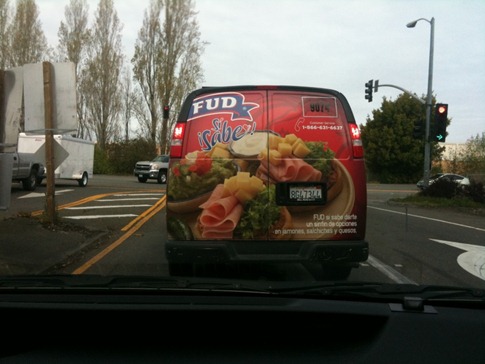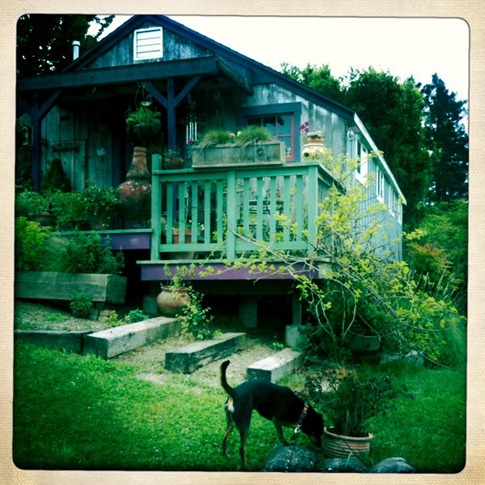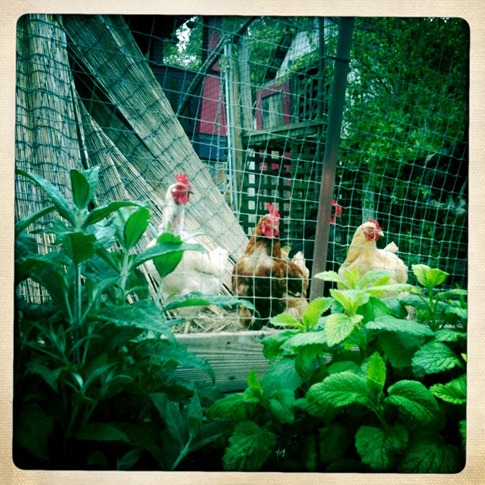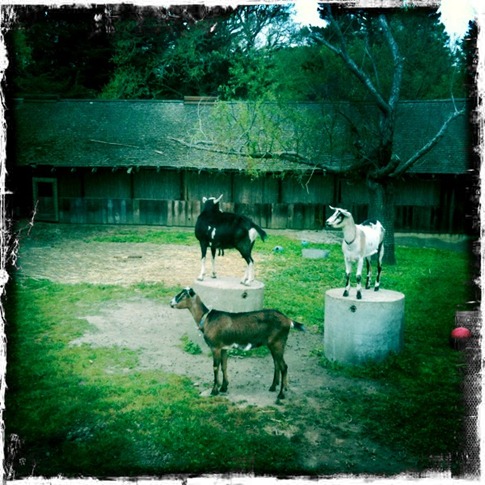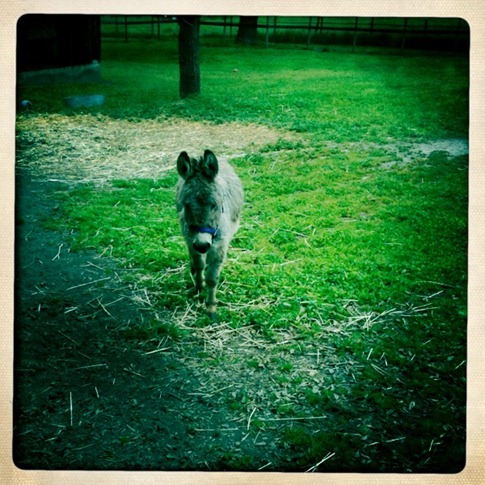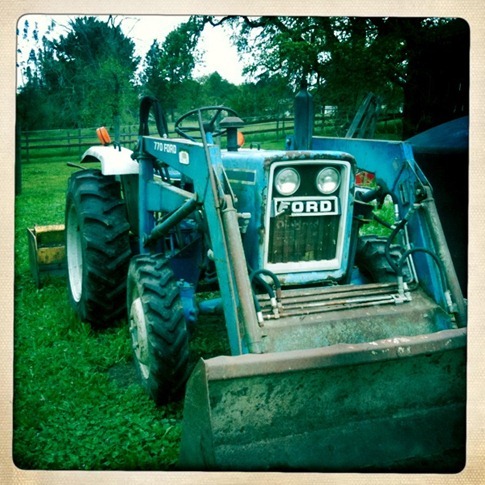At times, we’d talked about “The Trip” as driving to Tierra del Fuego at the southern tip of South America and at other times as driving around the world. What we knew was that we had the time and savings to be gone for at least 6 months and as long as 18 months and that we were ready for something different. To do something. Something a little bold. It’s not that we were scared of “the next phase.” In fact, we were looking forward to dinner conversations with friends that revolved around methods to avoid being urinated on while changing diapers (Note: The PeePee TeePee seems to come highly recommended). We wanted to settle down, just didn’t want it to feel like settling. So we decided on one last big adventure, hoping it would give us some better idea of how to find the balance. At the very least, we’d have some amazing stories to tell the clerks at Babies R Us.
We found the blogs of a few couples who had made or were making similar trips - Bumfuzzle, The Darien Plan and Lost World Expedition. While we saw reflections of ourselves in all of them, each represented its own unique combination of preparation, vehicle choice and travel style in addition to volumes of information and a great story. But most of all, they inspired us to just go for it. There’s a tendency to get bogged down in the planning, spending hours way too late at night on the Expedition Portal forums overthinking each detail, and while that can be a lot of fun, at some point, you just have to leave. We told friends and family of our plan and, while some were sad that we’d be away or concerned about our safety based on recent drug violence in Mexico, they all knew were were pretty level-headed people and wouldn’t decide to do something like this unless we’d really thought it through.
In the end, we traveled 10,000 miles in 5 months from San Francisco to Panama, passing through Mexico and all seven countries in Central America, and felt like we’d accomplished what we set out to do: break out of our routines and start being more active in our lives; Taking more charge of how we wanted to be living. On the road, every day was essentially a new palette of opportunities. On a given morning, we could drive to a beach or a volcano or a city or the country or decide not to drive anywhere at all. And we met a lot of people living the same way, either traveling or having picked up their lives and moved to a small town where they could live the life they wanted.
For some, the travel itself was the lifestyle. Others had found their “paradise” and either started a small business or were enjoying an early retirement. We started talking about what our ideal lifestyle would be. Our running joke was that, unlike many couples with conflicting schedules and never enough time to see each other, we had hours on end while sitting side by side in the truck to reflect on the experiences we were having and to talk about what we wanted. On top of that, we’d made arrangements back home to be gone for up to a year, renting our house, canceling services, referring clients and basically deconstructing the non-essential parts of our lives – friends and family being the exceptions – to a point that we now had the opportunity to rebuild however we wanted.
We’d seen incredible creativity and resourcefulness everywhere we went in Mexico and Central America, but also constant conflict with the forces of industrial and commercial progress. The people who had seemed the most content were those living in the countryside with a cow, a few chickens and a garden, but their lifestyle was under threat from real estate development and water pollution. Families that had moved into the cities were now piled ten to an apartment and the local markets – the mercados, where farmers could sell their meat and vegetables – had been replaced with Megas and Super Megas and yes, Walmarts filled with Wonderbread and 3 liter bottles of cola. And of course, the same thing was happening in the US.
The ironically named “FUD” brand was ubiquitous on the trip, and we actually came to regard it as one of the safer choices in the grocery stores. It’s telling that we actually saw this truck in San Francisco after we returned home.
As the trip went on, we felt ourselves drawn to tours of organic farms, appreciating the simplicity and interconnectedness of the inputs and outputs. Our Kindle filled up with books like The Omnivore's Dilemma and stories about people transitioning from fast-paced city lifestyles to life in the country. The venerable “This American Life” soon lost favor to podcasts about permaculture, diversified farming and local food. In the midst of a lot of confusion and impermanence in our daily lives on the road, all this just made sense to us.
When friends had joked that we probably would never come back from Central America, instead deciding to buy some piece of jungle and drop out forever, we told them there was little chance of that happening. But, we qualified, it was more than likely that after visiting natural wonders and seeing both travelers and locals living different lifestyles, that we wouldn’t want to return to the city. Even before we left, we’d been feeling a pull, not exactly towards the suburbs, but even beyond them. On explorations up and down the California coast, we’d stare at the endless rolling hills and make up details about the life we’d have out there. “Yeah,” I’d say, “you see that hill in the distance? Our property runs from this creek here to that ridge. One of these days, I gotta take the truck over there. I think I forgot my favorite shovel by that tall tree last winter.”
We’d return home and each surreptitiously open real estate listings on Craig’s List, rationalizing that we’d just have a quick look to indulge the idea so we could release it from our minds. Of course the prices in Northern California are astronomical compared to much of the rest of the country, but you could still get some decent acreage in those rolling hills for significantly less than the price of our 2+ bedroom house with a postage stamp backyard shoehorned into a neighborhood in San Francisco. For the time being, we’d been content to just drag our reluctant city friends on tours of goat farms and attend cheese-making classes in backyards in Berkeley, but now we felt like we had the opportunity and freedom to actually make the jump.
The week after we reentered, we booked a couple days in a cottage on a 2 acre “gentleman’s farm” in Petaluma, about an hour north of San Francisco, to see how we liked the lifestyle. Cooking fresh farm eggs, drinking milk out of glass bottles from just up the road and in the company of the goats and a miniature donkey that looked like a stuffed animal, we felt like we’d found what we were looking for.
I’m sure the owners of the cottage, Chris and Tanya, see a steady stream of young couples coming up from the city and by the end of one weekend, declaring that they want to move to the country. Chris gave us the straight talk. This life was not all rocking chairs and lemonade on the porch; It was constant projects and hard work. But he couldn’t talk us out of it. After 5 months on the road, we were ready to start building something, to settle down without feeling like we were settling and to feel more connected to the life we were living.

